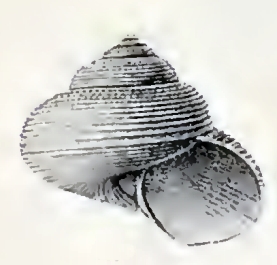
The Fairchild AC-119G Shadow and AC-119K Stinger were twin-engine piston-powered gunships developed by the United States during the Vietnam War. They replaced the Douglas AC-47 Spooky and operated alongside the early versions of the AC-130 Spectre gunship.
Squalidae, more commonly known as dogfish, dog sharks, or spiny dogfish, are one of several families of sharks categorized under Squaliformes, making it the second largest order of sharks, numbering 119 species across 7 families. Having earned their name after a group of fishermen reportedly observed the species chasing down smaller fish in dog-like packs, dogfish have slender, streamlined bodies, usually more compact in comparison to other species, and a pointed snout. Dogfish likewise have two dorsal fins, each with smooth spines, but no anal fin, and their skin is generally rough to the touch. As the species reaches adulthood, males usually measure a maximum of 100 cm, while females typically measure 125 cm long. The species therefore exhibits female-dominant sexual dimorphism.

Hypsogastropoda is a clade containing marine gastropods within the clade Caenogastropoda.

Oligoryzomys nigripes, also known as the black-footed colilargo or the black-footed pygmy rice rat, is a rodent in the genus Oligoryzomys of family Cricetidae. Oligoryzomys nigripes is a species that has been further divided into different sister taxa throughout history. It is found in different countries in South America. It is a large species with long ears, dark yellow to dark brown upperparts, sharply delimited from the whitish underparts, and often a pink girdle on the chest. This species of rat spends much of its life among the trees. The karyotype is 2n = 62, FNa = 78–82.

Calliostomatidae is a family of sea snails within the superfamily Trochoidea and the clade Vetigastropoda.

The demonic tube-nosed fruit bat is a species of bat in the family Pteropodidae. It is endemic to Papua New Guinea. The holotype specimen was collected in 1979 on New Ireland, in the Bismarck Archipelago. It was described as a new species in 1983. The range of the species may extend to other islands, however the extent of the range is not presently known.

Euplotes is a genus of ciliates in the subclass Euplotia. Species are widely distributed in marine and freshwater environments, as well as soil and moss. Most members of the genus are free-living, but two species have been recorded as commensal organisms in the digestive tracts of sea urchins.

Falsimargarita is a genus of sea snails, marine gastropod mollusks in the family Calliostomatidae.

Triaenops menamena is a bat in the genus Triaenops found on Madagascar, mainly in the drier regions. It was known as Triaenops rufus until 2009, when it was discovered that that name had been incorrectly applied to the species. Triaenops rufus is a synonym of Triaenops persicus, a Middle Eastern species closely related to T. menamena— the Malagasy species had previously been placed as a subspecies of T. persicus by some authors. Triaenops menamena is mostly found in forests, but also occurs in other habitats. It often roosts in large colonies and eats insects such as butterflies and moths. Because of its wide range, common occurrence, and tolerance of habitat degradation, it is not considered to be threatened.

Philippe Bouchet is a French biologist whose primary scientific fields of study are malacology and taxonomy. He works at the Muséum National d'Histoire Naturelle in Paris. He is also a Commissioner of the International Commission on Zoological Nomenclature.
Barolineocerus apiculus is a species of leafhopper native to French Guiana. The length is 4.4–5 millimetres (0.17–0.20 in). It is named for the unusual apex of the male subgenital plate. It is distinguished from other species in the genus by the unusual male subgenital plate, the bold projections from the anal tube, and the thickened reproductive organ.
Barolineocerus bispinus is a species of leafhopper native to French Guiana. It is the holotype for the genus Barolineocerus. The length is 4.4–4.6 millimetres (0.17–0.18 in). It is named for the pair of spines on the male anal tube. It is distinguished from other species in the genus on the basis of the spines on the male anal tube and the small spines on the reproductive organ.
Barolineocerus chiasmus is a species of leafhopper native to French Guiana. The length is 4.0–4.3 millimetres (0.16–0.17 in). It is named for the thin, sword-like protrusion on the last segment of the abdomen on the male. It is distinguished from other species in the genus on the basis of the aforementioned protrusion.
Barolineocerus declivus is a species of leafhopper native to French Guiana. The length is 4.4–5.0 millimetres (0.17–0.20 in). It is named for the protrusions from the male anal tube being bent downward. It is distinguished from other species in the genus by the protrusions of the male anal tube and the plain reproductive organ.
Barolineocerus elongatus is a species of leafhopper native to Colombia. The length is 4.9–5.0 millimetres (0.19–0.20 in). It is named for the very long male subgenital plates. It is distinguished from other species in the genus by the shortened protrusions of the male anal tube, and the prominent ventral spine on the reproductive organ.
Barolineocerus furcatus is a species of leafhopper native to Colombia and Brazil. The length is 5.0–5.1 millimetres (0.20–0.20 in). It is named for the unusual inner protrusion on the last segment of the abdomen on the male which is bifurcated at the apex. It is distinguished from other species in the genus on the basis of the bifurcated abdomen.
Barolineocerus ornatus is a species of leafhopper native to French Guiana. The length is 4.0–4.3 millimetres (0.16–0.17 in). It is named for the unusual long process on the last segment of the abdomen of the male, which is bifurcated at the apex. It is distinguished from other species in the genus on the basis of the protrusion on the abdomen.
Barolineocerus spinosus is a species of leafhopper native to the Colombian Amazon. The length is 4.5 millimetres (0.18 in). It is named for the unusual inner spine on the male subgenital plate. It is distinguished from other species in the genus by the subgenital plate. Only the male of the species has been described as of 2008.

Robert Lücking is a German lichenologist. He earned his master's and PhD from the University of Ulm, focusing on the taxonomy, ecology, and biodiversity of foliicolous lichens. He has received numerous awards for his work, including the Mason E. Hale Award for his doctoral thesis, the Augustin Pyramus de Candolle prize for his monograph, and the Tuckerman Award twice for his publications in The Bryologist. Since 2015, he has been serving as the curator of lichens, fungi, and bryophytes at the Berlin Botanical Garden and Botanical Museum, and several lichen species and a genus have been named in his honour.









